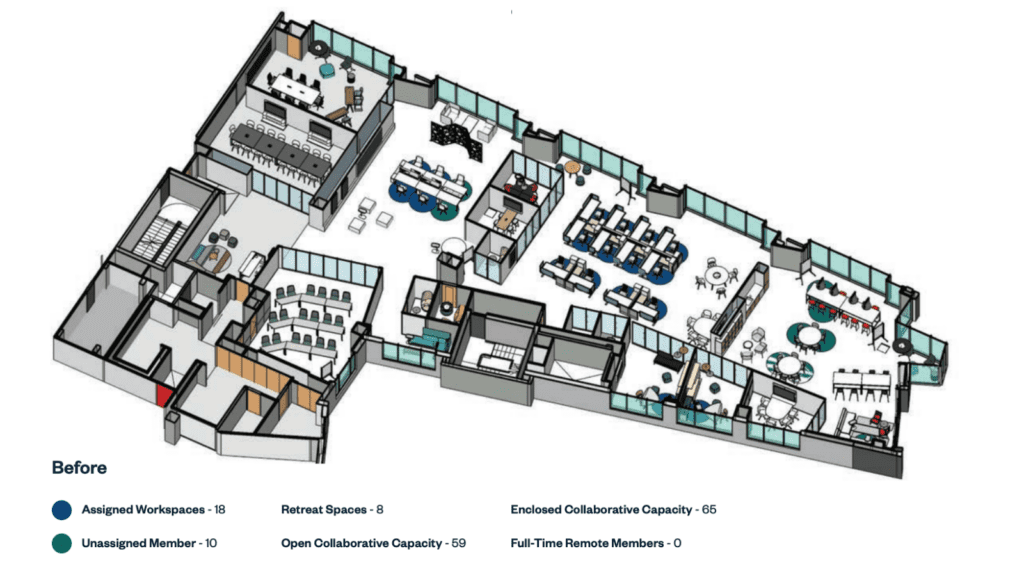Originally published in Supply Professional’s April 2021 issue.
Adapting the office for post-pandemic safety
Over the past 14 months, home offices and zoom calls have replaced communal workspaces and lunch meetings. Terms like the new normal or social distancing and unprecedented still dominate the narrative around our daily lives. We have begun to question the modern workspace. The way we work and interact with one another has evolved, and spaces will change to reflect this.
Across Canada, workers have been shifted out of their traditional office spaces and adapted to remote working.
While we all hope that the end is near for Covid-19 and we can see the light at the end of the tunnel, there are some lessons we will carry with us far into the future.
Now that a pandemic-free future is approaching, companies are working tirelessly to adapt their spaces for a safe return to the physical workplace.
We will cover some steps you can take to ensure safety today and follow the workplace design in the future.
Adapting Your Current Workplace
The official guidelines for a safe workspace are location dependant and vary depending on the industry, but everyone can make some overall changes.
Take some steps to identify what teams will be working from home versus your total office occupancy. This will give you a good idea about adapting your floorplate, so everybody feels comfortable and safe while in the physical office.
You don’t need to purchase new furniture or perform costly renovations to ensure your office has social distancing measures in place. There has been a surge of popularity in partitions and glass screens that be added to workstations and between desks. Glass screens and partitions are cost-effective ways to adjust the furniture you already own. They provide distance and screens between employees but still allow for an aesthetically pleasing design.
Co-working spaces saw a rise in popularity over the last decade. Companies scrapped the individual workspaces and opted for open-concept space with ample lounge seating for on-the-fly meetings. Collaborative spaces still play a vital role in the modern office but need to be adapted to allow social distancing. Fewer people will be physically in the office, so look at rearranging your design to allow for the recommended six feet of distance between individuals. Incorporate more solo guest seating into the layout, and stay away from large furniture pieces like couches.
Home offices typically do not have ergonomic-friendly furniture, which can cause some long-term effects on employee’s health. Ensure that your layout is ergonomic and your team is physically supported. These changes will be crucial after months of workers sitting at kitchen tables or couches. Look at incorporating sit-to-stand desks, monitor stands and proper task chairs into individual workstations to optimize employee health.
Workplace Design for the Future
Workplace design for the future has an emphasis on flexibility and adaptability. If there is one thing that we’ve learned recently, it’s that no one knows what the future holds. Prepare your workspace so that it can handle any hurdles and challenges that may come your way.
An excellent way to do to stay agile is to incorporate flexible furniture into your design. Flexible furniture allows for easy day-to-day changes and quick modification of every kind of workspace. There are tons of great flexible furniture options on the market, including moveable office furniture, modular office furniture and moveable walls.
Moveable office furniture can enable mobility and productivity while still being stylish. Modular furniture is made to provide your organization with long-term flexibility and use your office space as efficiently as possible. Moveable furniture allows for day-to-day changes, while modular furniture does require trained installers for reconfiguration. Moveable walls are a modular system that lets you adapt your space in hours, compared to weeks without any major renovations. No matter what your priorities are for your workspace, flexible furniture will keep your workspace versatile for the present and future.
When ordering new furniture, work with your supplier on realistic deadlines. You should expect different leadlines with manufacturers based on supply chain demands. While most workstations would have around a 6-8 week lead time, there may be some further delays due to the pandemic.
Optimize for Sanitization
Sanitization is a bigger priority now, and modern offices are reflecting this. Focus on incorporating easy to clean surfaces in high traffic areas. Frequent sanitization can deteriorate materials, so look for finishes that are constructed to withstand routine cleaning. Workstations, washrooms and kitchens are all breeding grounds for bacteria and germs. Focus on updating these areas first. With increased cleaning protocols also comes the need for increased accessible storage. PPE and cleaning supplies take up valuable office space, so incorporate some additional storage into your areas that are accessible by all employees.
Work with Experts
When doing major updates to any space, it’s essential to work with experts. Design experts can help you modify your workspace in the most efficient way possible. Look for a design expert who is up to date on the latest regulations and focuses on the future. Any significant changes you make today, you will want to work ten years in the future.
Professional install teams ensure that your furniture is installed correctly and safely. Professional installation may take longer now so that teams can stay covid compliant. Social distancing and increased sanitation are just some of the steps that installation teams are taking to ensure they are safe.
The most crucial factor is the safety and wellbeing of your team. Take extra steps to support your employees’ physical and physiological health. When updating the workspace, ask for employee input. They will be the ones that have to work within the space, and their wellness should be the priority.
Returning to the workplace may seem like a daunting task. By staying flexible and making all of the necessary changes, you can welcome this new way of work with ease. Stay safe, remain adaptable and greet your team back to the improved workplace.


